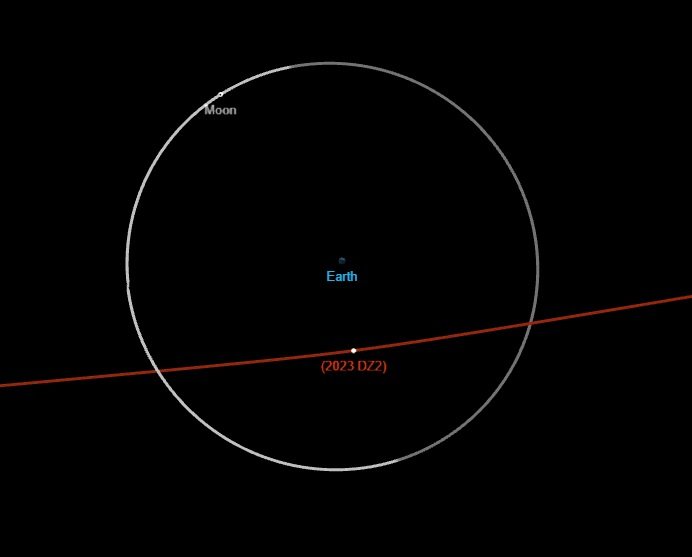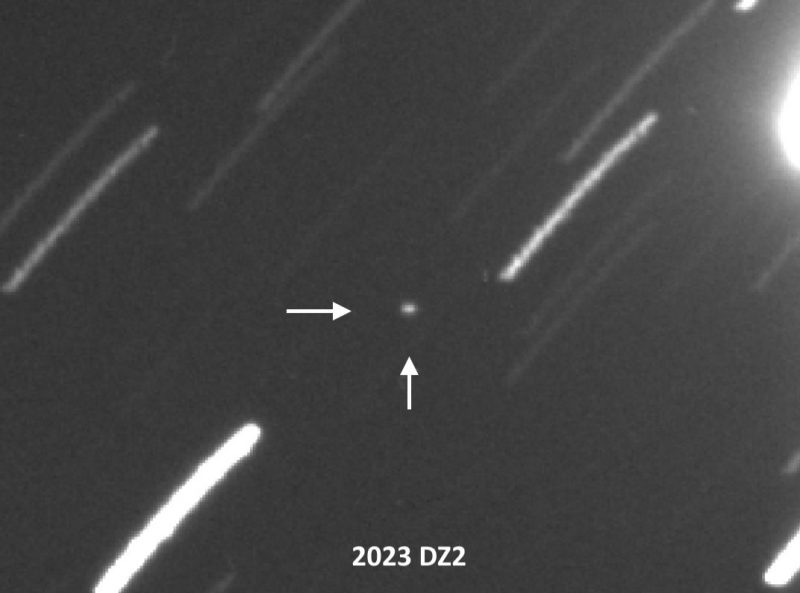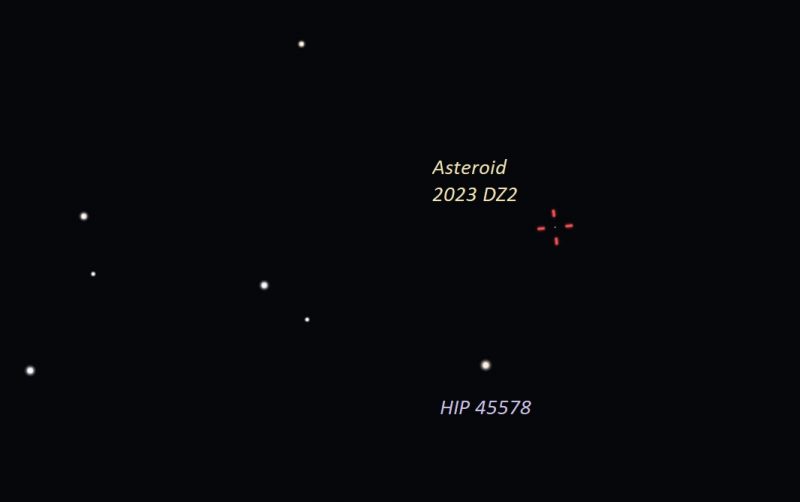
Yet another newly discovered space rock safely zipped past Earth, this one on March 25, 2023. It swept by at about half the Earth-moon distance. Astronomers at the observatory of La Palma, in the Canary Islands, Spain, discovered the asteroid in late February 2023. And amateur astronomers were able to get a glimpse of the asteroid as it sped past. See the charts at the bottom of this post.
Closest approach to Earth was around 19:51 UTC (3:51 p.m. EDT) on March 25.
Apollo-type asteroid #2023DZ2. Diameter 39-87m. First observed at La Palma: 27th Feb' Close approach today. Distance 175,000 km from Earth. #SpotTheAsteroid #IAWN #QHY42Pro @QHYCCD @RoyalAstroSoc @skyatnightmag @SPACEdotcom @esaoperations @AsteroidWatch pic.twitter.com/O95YXuxFKr
— Northolt Branch Obs (@NBObservatories) March 25, 2023
The asteroid has been labeled 2023 DZ2. It’s part of the Apollo family of asteroids. Estimates put 2023 DZ2’s size at about 210 feet (64 meters) in diameter.
For comparison, the asteroid that entered over Chelyabinsk, Russia, in February 2013 was a space rock around 65 feet (20 meters) in diameter. Watch a video of size comparisons in asteroids here.
2023 DZ2 is classified as a NEO (Near Earth Object). It orbits the sun every 3.16 years.
Last chance to get a moon phase calendar! Only a few left. On sale now.
No risk of impact in 2026
For a while, this new asteroid posed a very slight risk of impact with Earth on March 27, 2026. Fortunately, as of March 21, 2023, officials have removed it from the Sentry Risk Table, saying they are:
…able to rule out previous potential impacts as no longer consistent with the observations.
?Astronomers with the International Asteroid Warning Network are using this close approach to learn as much as possible about 2023 DZ2 in a short time period – good practice for #PlanetaryDefense in the future if a potential asteroid threat were ever discovered.
— NASA Asteroid Watch (@AsteroidWatch) March 21, 2023

Visible in small telescopes
Asteroid 2023 DZ2 passed 0.5 lunar distances (half the Earth-moon distance) from Earth’s surface. The relative closeness enabled observers to see the space rock in six-inch (15-cm) and larger diameter telescopes.
The space rock was traveling at a speed of 17,403 miles per hour (28,008 km/h), or 7.78 km per second, relative to Earth. While it sounds like a huge speed relative to what we’re familiar with on Earth, it wa a relatively slow asteroid in contrast to other space rocks that astronomers study.
Since the asteroid passed at half the Earth-moon distance, the small distance made it appear as a “slow-moving star” in the field of a small telescope.
One of the best techniques sky enthusiasts use to catch an asteroid, is to point the telescope at a known star in the asteroid’s path. Then they just wait for the slowly moving space rock to appear. Fortunately, many small telescopes now include a computerized Go-To hand control. Thus, you can point the instrument at a reference star to get a glimpse of passing asteroids.
When was the best time to see asteroid 2023 DZ2?
We found the best time to see asteroid 2023 DZ2 from the Northern Hemisphere was early on the night of Friday, March 24, 2023.




Bottom line: Asteroid 2023 DZ2 safely passed Earth at less than half the distance between the moon and Earth on March 24-25, 2023. People with telescopes were able to spot the visitor.











